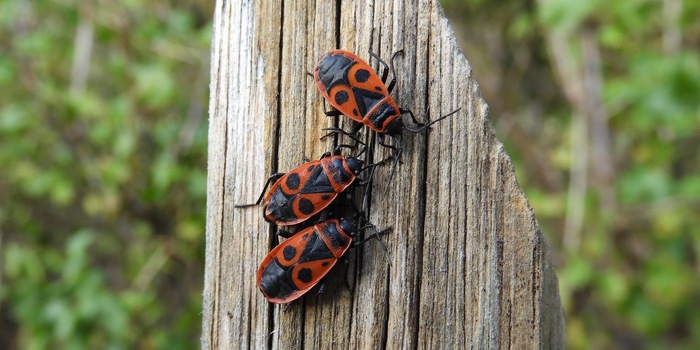
Biodiversity: the number of insects is also declining dramatically in forests
Insect mortality is already well documented in agricultural areas. However, the number of insects is also declining in German forests.
The number of insects has shrunk drastically over the past 15 years, not only on agricultural land but also in forests. This is the conclusion reached by researchers from the Technical Universities of Darmstadt and Munich in a new study. According to the study, the number of individuals of more than 60 per cent of the insect species examined has declined. The results were published in the journal "Communications Biology".
The experts analysed how the populations of 1805 insect species, including mainly beetles and true bugs, developed in German forests between 2008 and 2017. The analysis showed that larger and more common species are in particularly sharp decline. While the number of individuals of herbivorous insects actually increased slightly more than it decreased for a number of species, the number of individuals of all other food types, such as predators or deadwood decomposers, decreased significantly. "This will very likely have an impact on all organisms in our forests, as food webs are in danger of shifting," said lead author Michael Staab from the Ecological Networks working group in the Department of Biology at TU Darmstadt according to a press release
Insects are often only recognised as pests in forests, as shown by reports on the bark beetle, for example. However, all species are important for the natural balance. While changes in the populations of potentially harmful insects have been well studied, little is known about the status and development of the many other insect species in forests. In the current study, the researchers focussed on three regions: the Hainich National Park, the Schorfheide-Chorin Biosphere Reserve and the Swabian Alb Biosphere Reserve. They found that the decline in insects was greater in forests with a high proportion of conifers such as spruce and pine, which rarely occur naturally in the study areas. In contrast, the losses were lower in native beech forests. Furthermore, the declines were less severe in protected forests without forestry utilisation than in intensively managed forests.
Insect mortality on agricultural land is often attributed to monocultures, the use of pesticides and a lack of flower meadows. For years, numerous efforts have been made to counteract this dramatic development. In forests, however, the reasons are still largely unclear according to the authors of the study. In their conclusion, they suggest managing forests in a more targeted manner and promoting a more natural composition of tree species and reduced logging. This could help to mitigate insect mortality in forests.
Spectrum of science
We are a partner of Spektrum der Wissenschaft and want to make well-founded information more accessible to you. Follow Spektrum der Wissenschaft if you like the articles.
[[small:]]
Cover image: Shutterstock
Experts from science and research report on the latest findings in their fields – competent, authentic and comprehensible.
From the latest iPhone to the return of 80s fashion. The editorial team will help you make sense of it all.
Show all